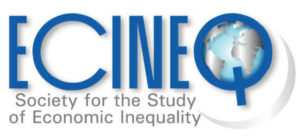Dynamics of child poverty in the European countries
Working Paper 2017-437
Abstract
The aim of this paper is to analyse to what extent the previous status of children in poverty affects current child poverty, even when we control for observed and unobserved individual heterogeneity and treat the initial condition problem. On the basis of Wooldridge’s (2005) methodology, we estimate a dynamic random effects probit model considering three levels due to the hierarchical structure of our data: observations for each year (level 1) of the children (level 2) nested into countries (level 3). We corroborate the relevance of lagged status in poverty and assess the role of context variables in explaining differences across countries in child poverty dynamics. In particular, we highlight the significance of family benefits in reducing child poverty and assess which features of these benefits are more effective to reduce child poverty: means tested vs. non-means tested benefits. This way, some key insights are provided to design more effective public
Authors: Elena Bárcena-Martín, M. Carmen Blanco-Arana, Salvador Pérez-Moreno.
